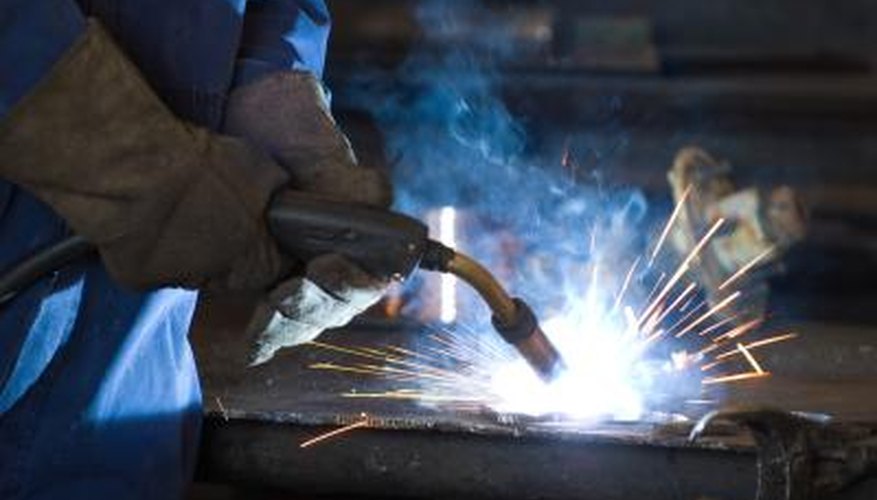Aluminium is a lightweight metal with a strong weight-to-strength ratio that makes it useful in many manufacturing processes from auto aftermarket installations such as roll bars to the construction of hiker backpacks. For effective use, though, builders need to be able to bend the rods. Professionals who work with aluminium have special bending rigs, but the DIY enthusiast or hobbyist needs a less-expensive option. Annealing the aluminium involves heating the metal, lowering its strength in the heated portion to enable bending. Though the aluminium rod loses some of its strength in this process, it retains enough for most uses.
- Aluminium is a lightweight metal with a strong weight-to-strength ratio that makes it useful in many manufacturing processes from auto aftermarket installations such as roll bars to the construction of hiker backpacks.
- Though the aluminium rod loses some of its strength in this process, it retains enough for most uses.
Position the aluminium rod in a tabletop vice with the section of rod that you're planning to bend positioned slightly higher than the vice jaws so that you can make the bend without creasing the top of the bend arc with the vice edge. Tighten the vice securely so that the rod does not move at all. Test the rod for movement before beginning the bending process.
Make sure that the valves on the oxygen and acetylene tanks are in the off position. Connect the head of the acetylene torch to the tanks using the torch hoses. When using the torch, wear protective gear, including welding gloves, welding helmet and leather apron.
Start the flow of acetylene by turning the valve to the tank about one-half of a full turn. Light the gas with the striker to produce an orange-red flame.
- Make sure that the valves on the oxygen and acetylene tanks are in the off position.
- Start the flow of acetylene by turning the valve to the tank about one-half of a full turn.
Run the flame over the area of the rod you intend to bend until the area develops a layer of black soot. Remove the flame from the bar, and add oxygen to the torch flame by turning the valve on the oxygen tank slowly until the flame turns blue.
Run the flame over the soot-covered area until the soot disappears, burning off with the flame's heat. Remove the flame from the area, then turn off the torch by closing the oxygen valve completely and then closing the acetylene valve.
Place a piece of barstock, another aluminium or other metal rod at least as strong as aluminium, about the same curvature of the bend you wish to create against the aluminium bending point, and clamp it into place. You can purchase barstock from a hardware or home improvement store. Grab the end of the rod while you are still wearing the welding gloves, and bend the aluminium over the bar stock until you've created the curve you wish. In order to bend the aluminium at an angle, simply bend it over the vice edge without the curved stock in place. Allow the rod to cool before use.
- Run the flame over the soot-covered area until the soot disappears, burning off with the flame's heat.
- Place a piece of barstock, another aluminium or other metal rod at least as strong as aluminium, about the same curvature of the bend you wish to create against the aluminium bending point, and clamp it into place.
